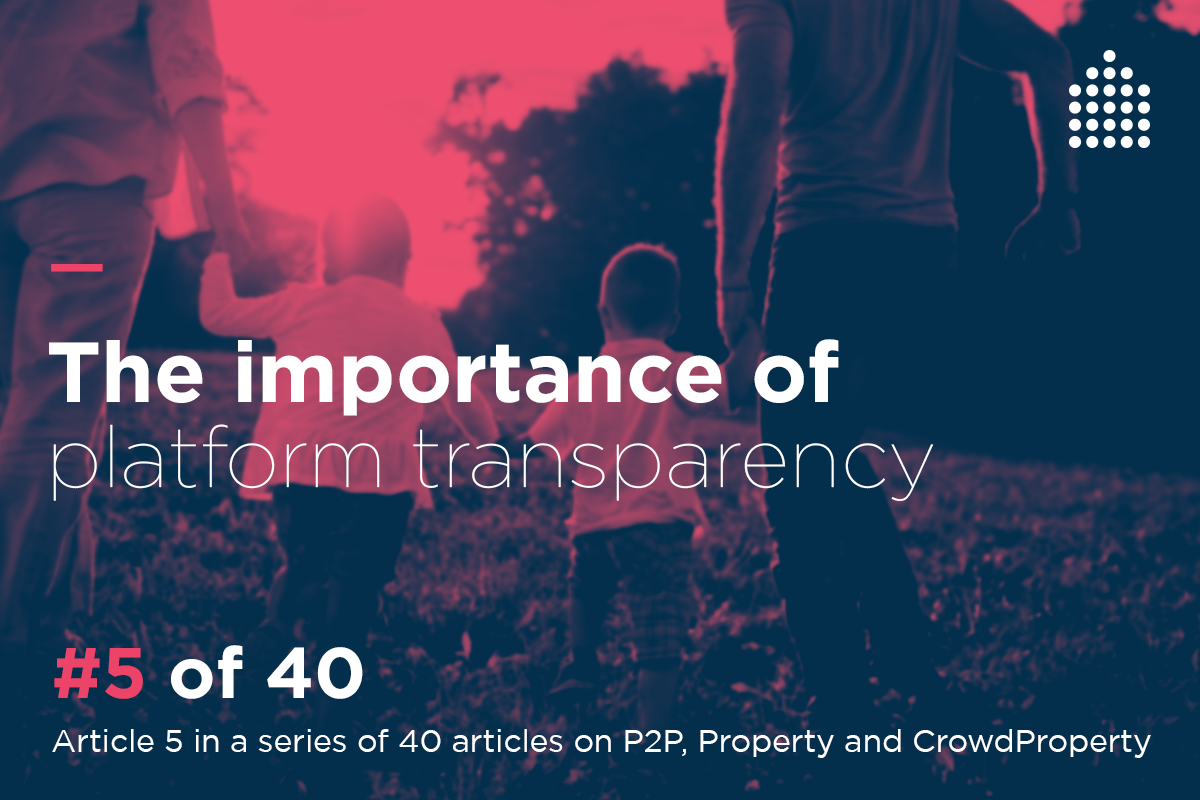Borrow
Case Study
Podcasts
Awards
About
Article 5 in a series of 40 articles on P2P, Property and CrowdProperty
In article 4, we lifted the lid on our borrower proposition. This article looks at why it’s important that you know the fundamental figures of the lending platforms, and the next article looks at what those figures tell you.

Scourge of politicians Jeremy Paxman, when grilling his victims, always asked himself the question ‘why is this liar lying to me?’ He put it more strongly, but you get the idea.
It’s not a bad attitude to take when you are handing over your money to invest. You want to know it’s in safe hands, and this is not something you should take on trust. Which is why we are so keen on full disclosure, to the extent that our statistics page – where we lift the lid on our performance and charges to lender and borrower alike – leads the field among alternative finance providers. It’s not a claim we make lightly, so let us explain why our disclosure is so good – and who else thinks so.
Third-party verification

It’s actually a lot riskier if you can’t see through it
Our website tells you “CrowdProperty is the only property development/bridging member of the Peer-to-Peer Finance Association (P2PFA) and we publish thorough performance data to promote transparency and accountability, a principle core to our values.” That’s important. Among other things, the P2PFA ensures that its members abide by a code of ethics and keep to a minimum standard of disclosure and transparency.
We are held to independent account for the performance of every loan we originate through complete transparency of every loan cashflow via third-party verification by Brismo, the market leading provider of lending performance data. We were also runner up in ‘Best Clarity of Data’ at the Altfi awards 2018 – a category that Funding Circle won the previous year, so we were up against the big guns in the alternative finance market.
Such third-party verification is important – investors deserve the assurance that an expert third party has kicked the tires until the toes throb on their behalf.
Transparency and risk
To illustrate why this makes a real difference, consider the simplified example below.
Take two platforms. One charges its borrowers 10% and pays its lenders 8%. Another charges its borrowers 20% and passes on 10% to its lenders.
Which do you choose? If you are entirely rate driven, you would go for the 10%. Some people do invest this way, and there’s evidence, particularly in the early days of P2P, that this was a major driver in the market. Others, if they know what the platform is taking, out of a sense of fairness as no one likes being taken for a ride – might opt for the 8%.
They would be right: but not, primarily, because of fairness. It’s because risk comes at a price: lending organisations such as banks charge more for loans where the default risk is greater. They have ranks of underwriters, masses of data, to allow them to price this risk correctly by setting an appropriate rate. So if someone is borrowing at 20%, that’s a far riskier loan than someone borrowing at 10%. They couldn’t get cheaper rates because the risk is assessed to be high. The owners of the loan capital – in this instance, you – should be paid fairly and in proportion to that risk. With a tight ‘spread’ – i.e. the difference between the lender and borrow rate – of 2%, you are.
On the other hand, if a lending organisation is pocketing a large proportion of the borrowers’ payments, then the individual lender is not being paid for the risk they are taking. And, remember, this isn’t a deposit – it is the lender who bears the risk of capital loss here.
The same is true for type of security and measures of loan-to-value (LTV). The higher the LTV on a loan, the greater the risk, all other things being equal. So it’s natural that a property lender should want to know the LTV of the project they lend to. We’ll dig into this and similar metrics in the next post.
Ultimately, this transparency proves our mission of delivering the most effective matching of supply and demand for loan capital, which in turn makes for the most efficient running of a market. On the other hand, opaque markets are far more likely to be dysfunctional.
Therefore, if a platform isn’t transparent on lending and borrowing rates, defaults, payback performance and the like, you need to ask yourself, why? And why wouldn’t a platform open up their data in its entirety to independent third parties for verification of performance? There’s a strong likelihood that this means its lenders are taking unrecognised risk. And that’s something you should never do with an investment.
Find out more at www.crowdproperty.com
Read more about how investing works and investment options at www.crowdproperty.com/lenders
View our statistics page: www.crowdproperty.com/statistics













As featured in...



































